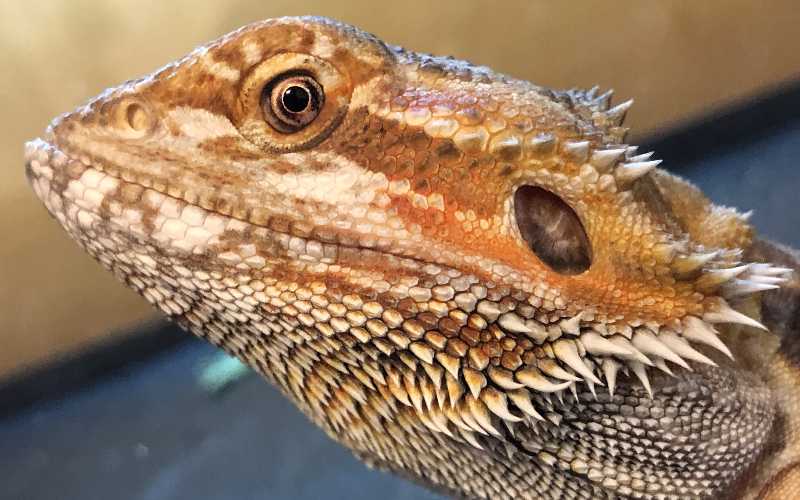Bearded dragons have been in the top rankings for most popular reptiles to own since they were first imported to North America. Their carefree nature along with their valued life span makes them an incredible pet to own.
But having a carefree attitude and long fulfilling life isn’t the only thing you should consider with a beardie. They have very specific dietary requirements that need to be followed directly, otherwise, you could be risking the health of your favourite pet.
The good thing is, it isn’t too difficult to feed them. Especially, once you’ve done it a few times and found yourself getting into a routine.
Beginners: listen up. If you’re worried that a beardie may be too complicated to keep as a pet, follow this nutrition guide and you’ll be set.
What type of Insects should I feed my bearded dragon?
Insects are probably the most important aspect of your pet’s diet. It makes up the bulk of its diet, alongside some vegetation to keep it hydrated.
It’s important to feed your bearded dragon the correct insects, to ensure it has a long-lasting life as well as keeps a vibrant healthy colour.
Some great insects include:
- Crickets
- Cockroaches
- Locusts
- Earthworms
- Redworms
- Dubia roaches
Bearded dragons are a lot like dogs, cats and other food-driven animals. They will eat pretty much anything that is put in front of them. However, like all other pet animals – as an owner, you need to be careful what you’re putting in front of your bearded dragon. At the end of the day, you should only be feeding them things that will help generate long life and healthy living.
Here are some insects to absolutely avoid:
- Fishing bait insects
- Glowing insects
- Spiders and insects found inside your home
- Insects with stings
- Insects found outside your home
There is a typical rule of thumb. If your local reptile shop doesn’t have a certain type of insect for a bearded dragon, there is a reason for it. Not only that but the insects that they choose are carefully inspected and not just picked up from outside. This way, you are avoiding any potential disease-carrying insects and poisoning your pet.
What vegetables should I include?
Just as important as ensuring your reptile is fed insects, the vegetation that it digests is just as imperative. You’ll want to stay away from any vegetables that are hard, like carrots, as this could hurt their teeth. That’s not to say that you can’t boil the vegetable or cook it until it is slightly softer and then give it to your pet. Ensure it has cooled down first though.
Most green vegetables can be served raw. But, you must stay away from frozen vegetables. Make sure the vegetation that you give to your bearded dragon is fresh, as this is their main source of hydration.
Here are some great fruit and veg to consider:
- seedless watermelon
- Collard greens
- Mustard greens
- Bell peppers
Like with anything, variety is key. You wouldn’t feed your baby, kids, family or even yourself the same meal every single day. The same goes for your bearded dragon.
Ensure they have a variety of different insects and vegetation to keep them interested in their food. Giving the same nutrients every day will become boring for them.
Is it different for adults than children?
Younger bearded dragons are in their developmental stage and therefore require additional nutrition compared to their older selves.
It is recommended to feed your young bearded dragon as much as they can eat within 15 minutes. Keep putting the insects and vegetation in until they begin to slow down. You’ll want to do this around 3-4 times per day. They will need a 75% insect to 25% vegetation ratio when it comes to feeding.
As they get older, they will tend to eat much more vegetation. A fully grown beardie will switch to an 80% vegetation and 20% insect diet. To compensate for this change, feed your bearded dragon insects once every 2 days, whilst keeping a fresh supply of vegetables and fruit in their enclosure throughout the day.
If you enjoyed this article you might also like to read about The Red-Bearded Dragon: Care Sheet and Bearded Dragon Tank


2 thoughts on “Bearded Dragon Diet and Nutrition”